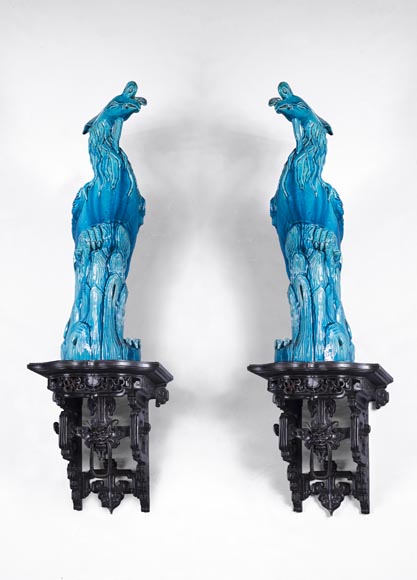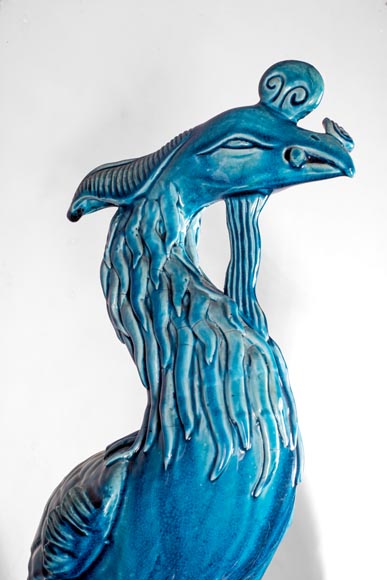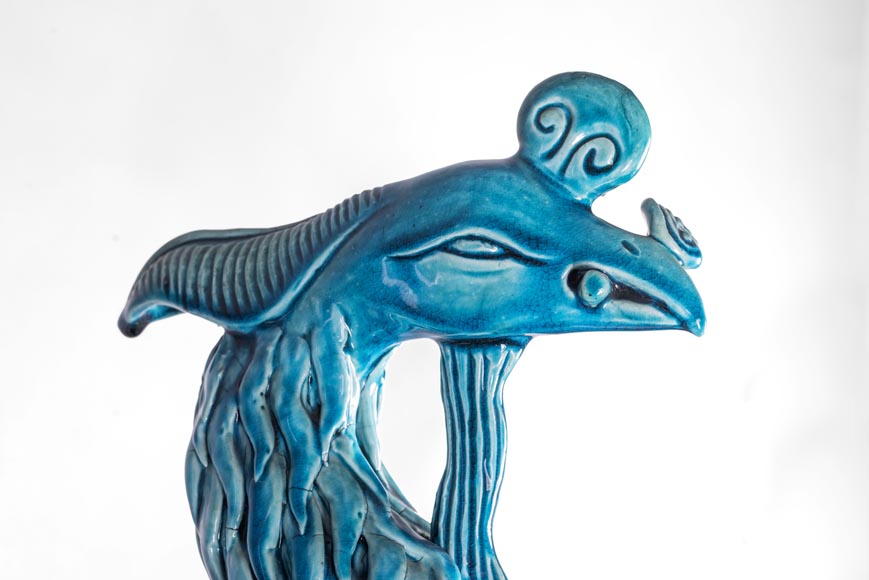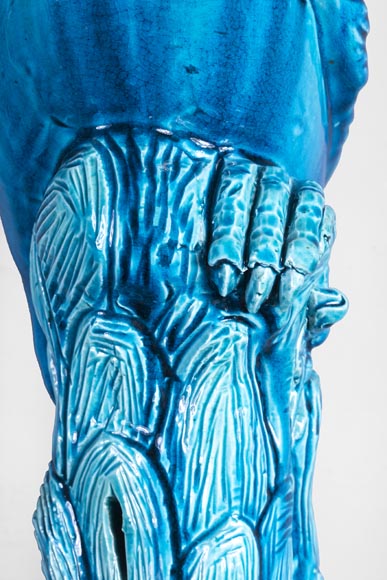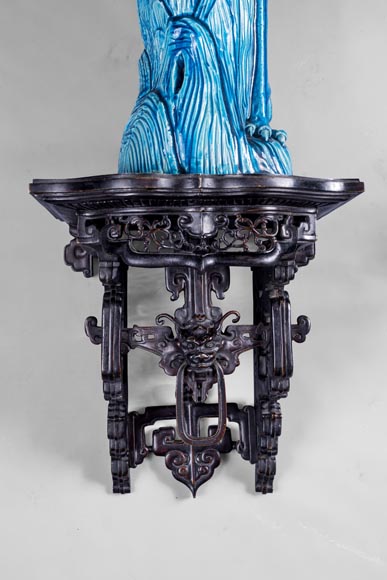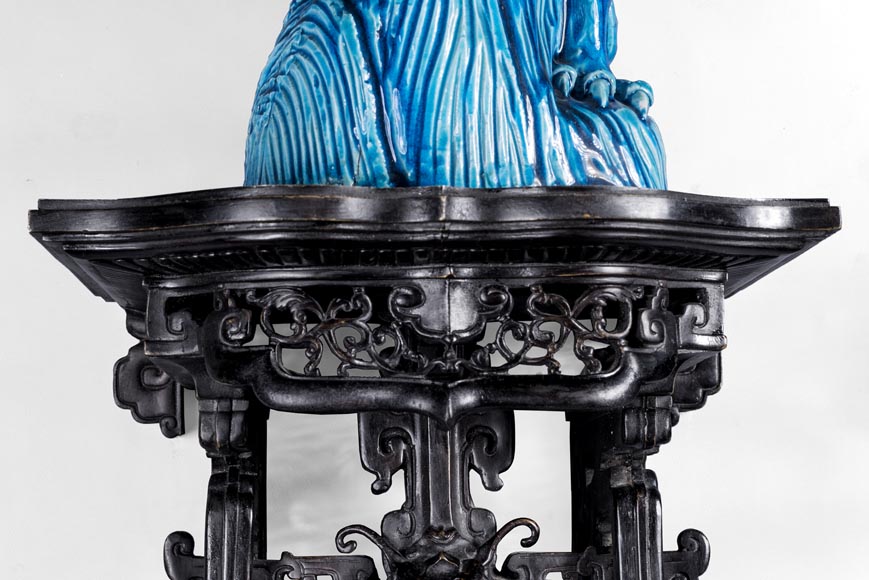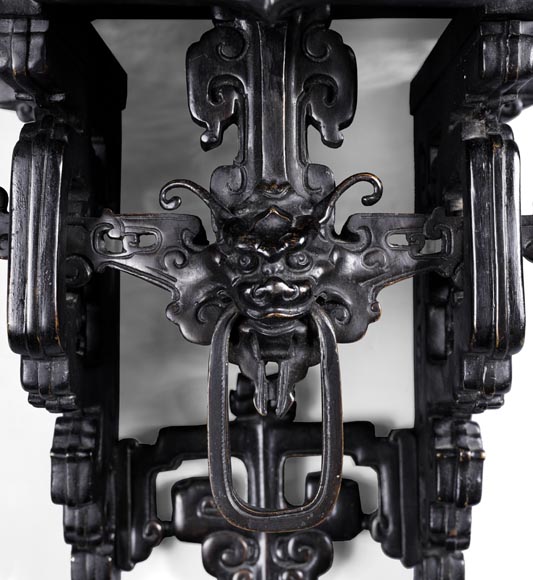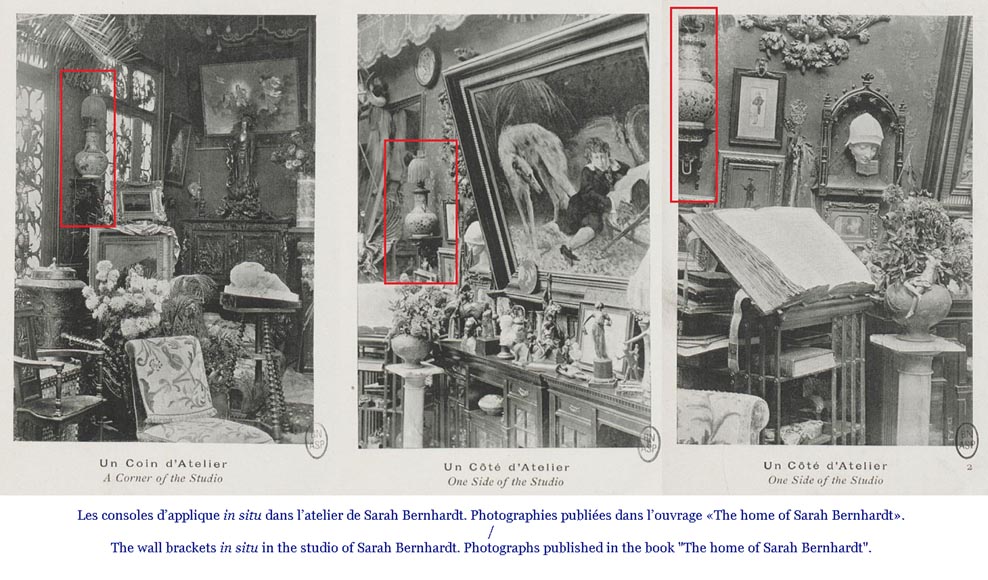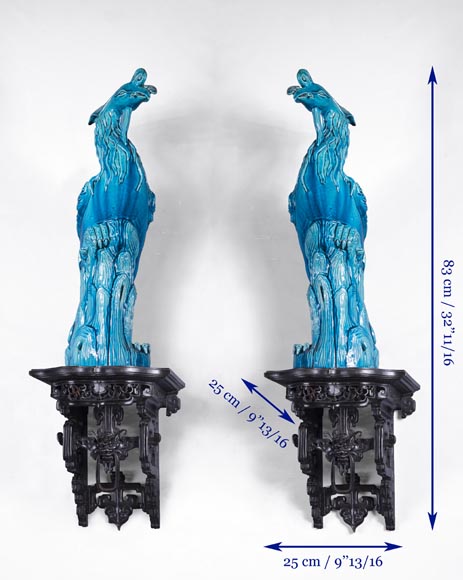Style Japonism, Chinoiserie / Ref.10521
Eugène-Frédéric PIAT (1827-1903) - Pair of Japanese wall brackets, a similar model of which belonged to Sarah Bernhardt
Dimensions
Width 9'' ⅞ 25cm
Height 32'' ⅝ 83cm
Depth: 9'' ⅞ 25cm
Origin:
France, Second half of the 19th century. China, 19th century for the phoenix.
Bronze with brown patina, glazed stoneware phoenixes (China, 19th century)
H. 83 cm / 32’’ 11/16 ; W. 25cm / 9’’ 13/16 ; D. 25cm. / 9’’ 13/16
This model of wall brackets was created by Frédéric Eugène Piat for the Maison Gagneau in Paris. According to the description proposed by the Museum of Troyes in its "Catalog of Decorative Arts" of 1897, there are arms of light composed of a "Chinese modillon with two brackets, an entablature and a gallery with openwork". Inspired by Chinese art, this pair of wall brackets combines the Far Eastern motifs with French ornamental elements: rinceau scrolls and interlaces characteristic of the Louis XV style, illustrating the vogue for eclecticism that marks the artistic production in the 19th century. The motif of the Asian monster recalls the lions mufles made by the artist in its works of Renaissance inspiration while evoking the imaginary bestiary of Japonism; the monster holds in its jaws a ring that recalls a knocker but devoid of its primary purpose as it is indeed a purely decorative element.
The same model belonged to the actress Sarah Bernhardt and is visible on old photographs of her Parisian house. The same pair of wall brackets adorned her studio.
Frédéric-Eugène Piat (1827-1903) was one of the leading French sculptors and ornamentalists of the 19th century at the beginning of, with Louis-Constant Sévin in particular, the renewal and development of the French bronze industry. An active member of the Bronzes Manufacturers' Association, he is one of those who have merged art and industry. He later became one of the founders of the Central Union of Fine Arts Applied to Industry in 1864.
After training with sculptors and ornamentalists, he started his own business in 1845 and enjoyed a good reputation in the 1850s. During the next decade, he began a collaboration with the founder Louis Léon Marchand (1831-1899). In the 1870s, he collaborated with eminent manufacturers: Georges Édouard Gagneau, Charles de Marnyhac, Emile Colin and the Val d'Osne Foundry.
His artistic consecration takes place from the year 1873: while he designs models to be exhibited at the World’s Fair of 1873 in Vienna, he receives the visit of the President of the Republic Adolphe Thiers who makes him knight of the Legion of Honor for his fruitful contribution in the field of the bronze industry in French art.
He participated at the Parisian Salons and at nine World’s Fairs in the second half of the century. He is particularly noticed during the World’s Fair of 1878 held in Paris where he exhibited a vast collection of works of art thanks to which he received a gold medal, but especially during the World’s Fair of 1889 when he was decorated with the Grand Prix, higher reward ever given to an industrial artist. Thanks to the quality and style of his productions, which are typical of the taste of the time for historicism and eclecticism, and as shown by this pair of Japanese-style consoles, Piat enjoyed not only a nation-wide reputation but also international.
Informations
Price: on request
Recommended for you :
Dimensions:
Width: 25
Height: 25
Depth: 27
Dimensions:
Width: 144
Height: 110
Depth: 45
Dimensions:
Width: 45
Height: 74
Depth: 34
Dimensions:
Height: 65
Depth: 56
Diameter: 69
Dimensions:
Width: 56
Height: 74
Depth: 40
Dimensions:
Width: 195
Height: 87
Depth: 40
Dimensions:
Width: 226
Height: 279
Depth: 56
Dimensions:
Width: 28
Height: 44
Depth: 15
Dimensions:
Width: 41
Height: 115
Depth: 41
Dimensions:
Width: 37
Height: 62
Depth: 37
Dimensions:
Width: 153
Height: 93
Depth: 54
Dimensions:
Width: 108
Height: 250
Depth: 30



